September is coming to the end and the summer is sadly over. It is my favorite part of the year, in my view there is never too much sun. The summer was unusually rainy and coldish for southeastern Ontario, but fortunately I spent several weeks in Serbia under the warm southern sun. That helped a lot and should keep my batteries charged for a while.

The trip was great and besides all the memorable time spent with family and friends the food was expectedly incredible! The lineup of authentic and fantastically tasting dishes was long: sarma (cabbage roll), pljeskavica(burger), cevapcici (minced meat rolls), muckalica (stew), roasted lamb and pork, dimljena vesalica (smoked meat), burek, sukana pita, svadbarski kupus and much more. Vurda was one of the items on the menu and I enjoyed it with gurmanska pljeskavica (Serbian style burger). The paring was absolutely delicious!
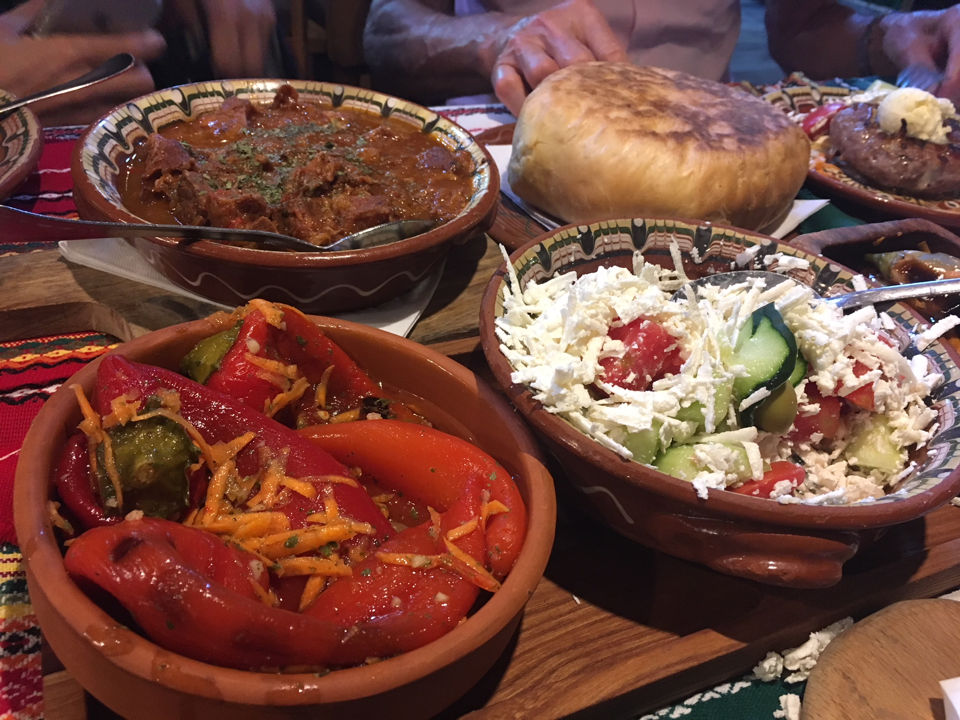
Vurda is cultured dairy spread native to south-east Serbia, the region bordering Bulgaria. This mountainous Balkan region with sparsely populated villages is home to many authentic and traditional foods: Belmuz, Sukana Pita and Vurda to name few. By taste and texture it somewhat reminds of what is in western world known as “Greek yogurt”, but different and with more complex flavour. Process of making Vurda involves strained yogurt that is salted and then fermented before consumption. Often fresh peppers, either sweet or hot are added to the mix and they impart their own unique flavor to this wonderful spread. Vurda can be made any time, but I find it the easiest in the cool fall and winter temperatures.
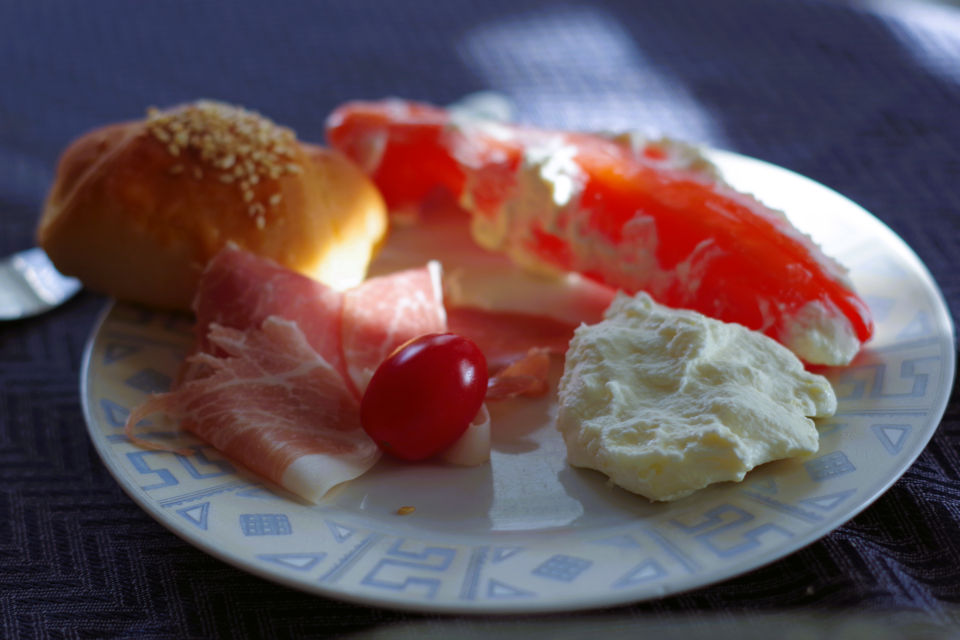
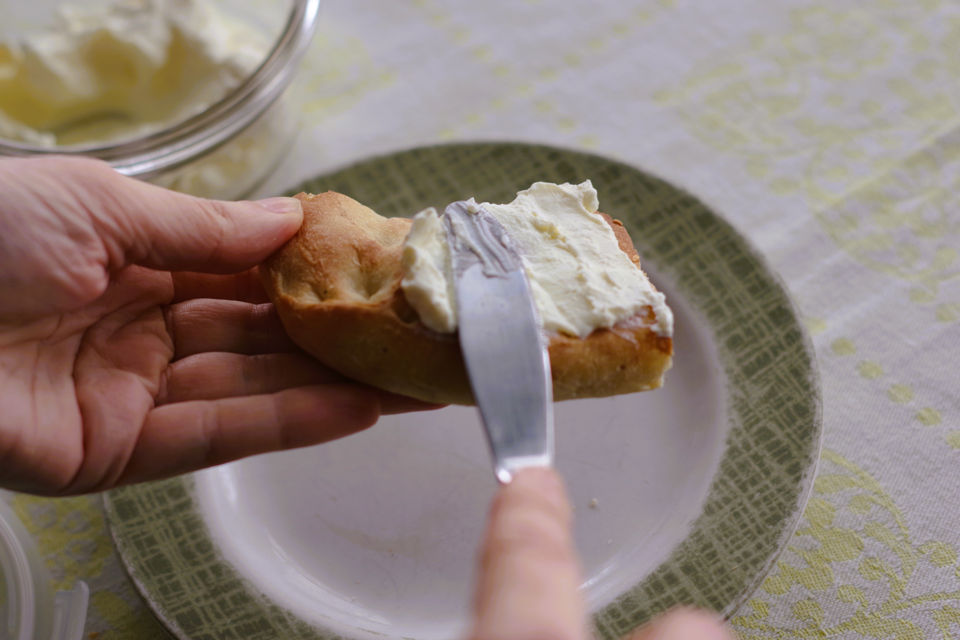
Traditionally during fermentation time Vurda suppose to be covered with a clean cloth that is frequently changed and washed off. The cloth is laid right on the top surface so there is no air trapped. The cloth would let through formed carbon dioxide gas, but some mold would tend to form on top of the cloth and that is the reason it was changed often. This is how my father in law explained the process to me as he remembered from his childhood in this area.
I introduced little change to the process. Instead of cloth seal I used a layer of olive oil. My mother used to conserve sheep cheese by getting it stuffed in the container and completely covered with olive oil. This way she kept it through the whole winter without use of refrigeration. I used similar idea by creating a plug with olive oil that would let carbon dioxide out, but at the same time keep it air tight. It works great and that is my little contribution to this traditional recipe process.

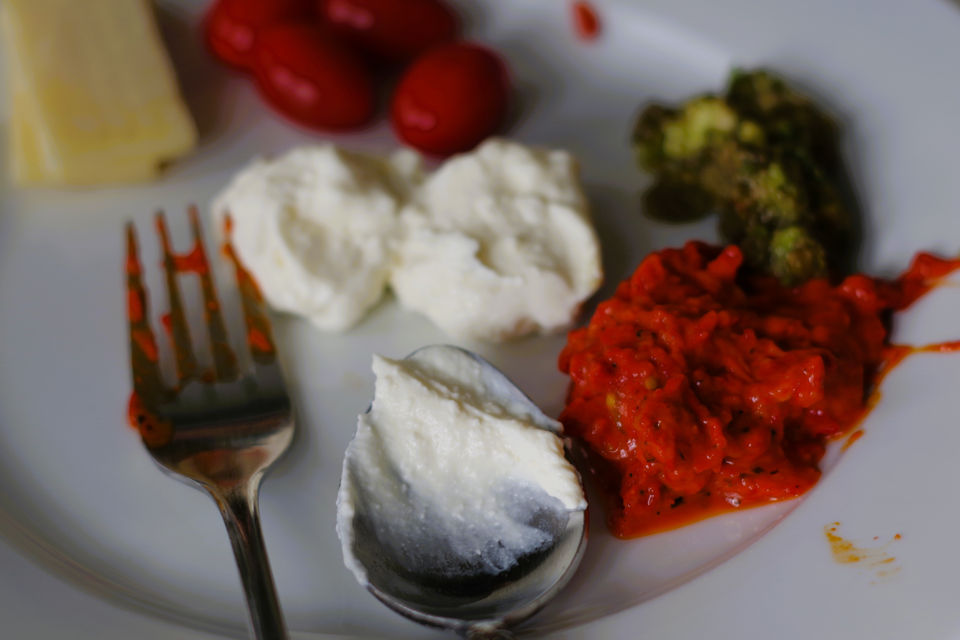
Vurda is great companion and side to anything from from fried eggs to barbecued meats, it can be spoon eaten on its own, but it also can be simply enjoyed as a spread on a slice of a fresh rustic bread. Enjoy it!
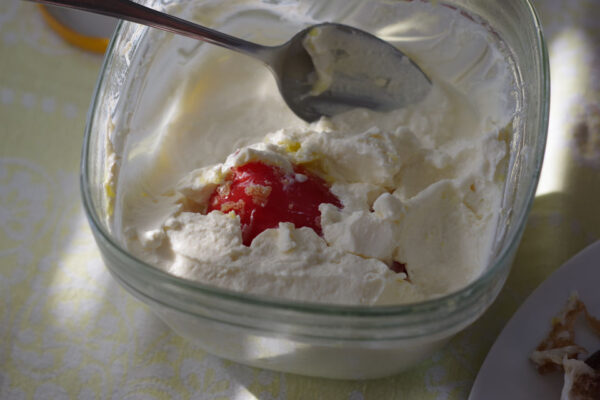
| Prep Time | 30 min |
| Cook Time | 40 min |
| Passive Time | 24 hrs |
| Servings |
kg
|
- 5 L organic cow milk
- 12 tbsp plain yogurt starter cultures
- 2 tbs fine sea salt
- 2-3 banana peppers washed and dried
- olive oil as required
Ingredients
Ingredients
|

|
- Make a yogurt, cool to room temperature and refrigerate overnight. If you don't know how to make a yogurt you can find the recipe link below in the recipe notes.
- Line a colander with a clean cheesecloth and place it inside the large cooking pot or mixing bowl. The purpose of mixing bowl or pot is to capture the whey that will be drained from yogurt.

- Tie cloth corners into a secure knot. Squeeze the bag gently from the top just to start seeing the whey flowing from the bag.
- Hang the cheese cloth bag and let the yogurt drain over next 24 hours on cool room temperature. I used wooden spoons for the bag support.
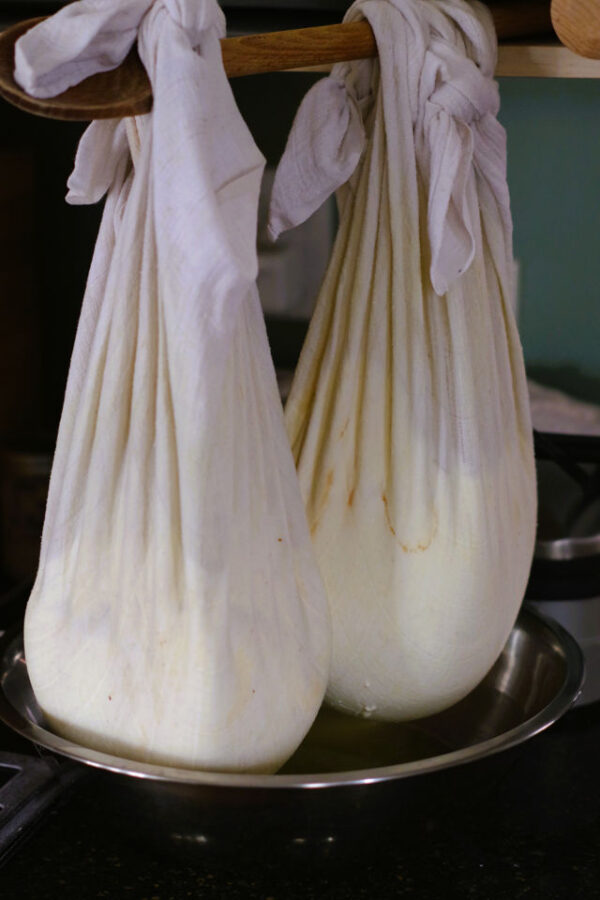
- Transfer the drained yogurt to a large mixing bowl and stir in a sea salt, mix well.
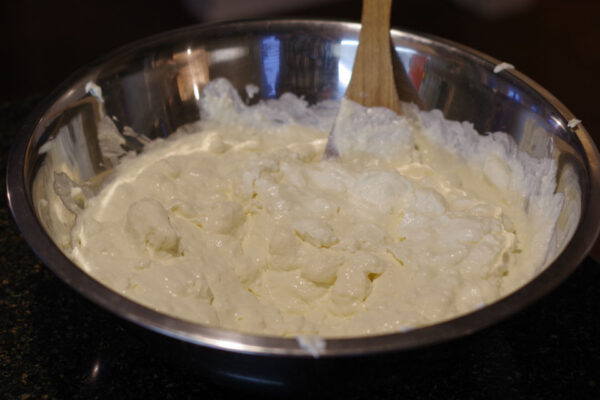
- Fill half of a sealable container with yogurt mixture, lay the pepper in and top it up with yogurt to cover it completely. Make sure that the top yogurt surface is smooth, level and about 10 mm under the container edge. Note: Pepper also can be seeded and cut in smaller pieces.
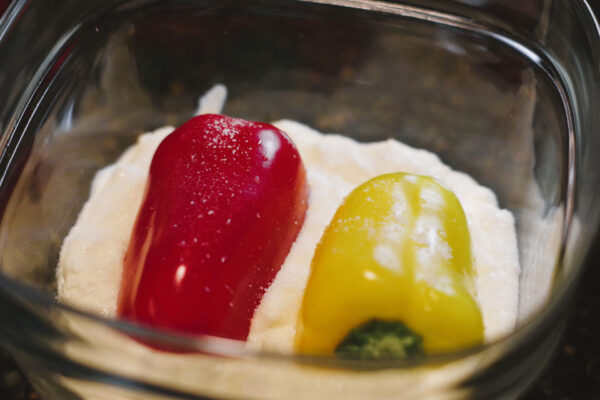
- Pour in olive oil on top; just enough to assure that no yogurt peaks protrude above the oil surface. Cover the container loosely and refrigerate for 3-4 weeks.
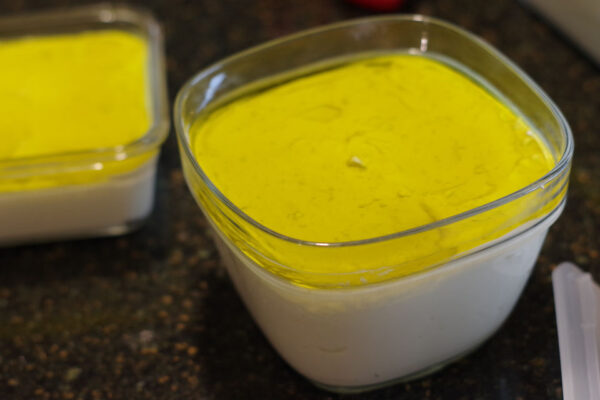
- Using a spoon remove gelatinous oil from the top.
- Keep the container sealed and refrigerated.

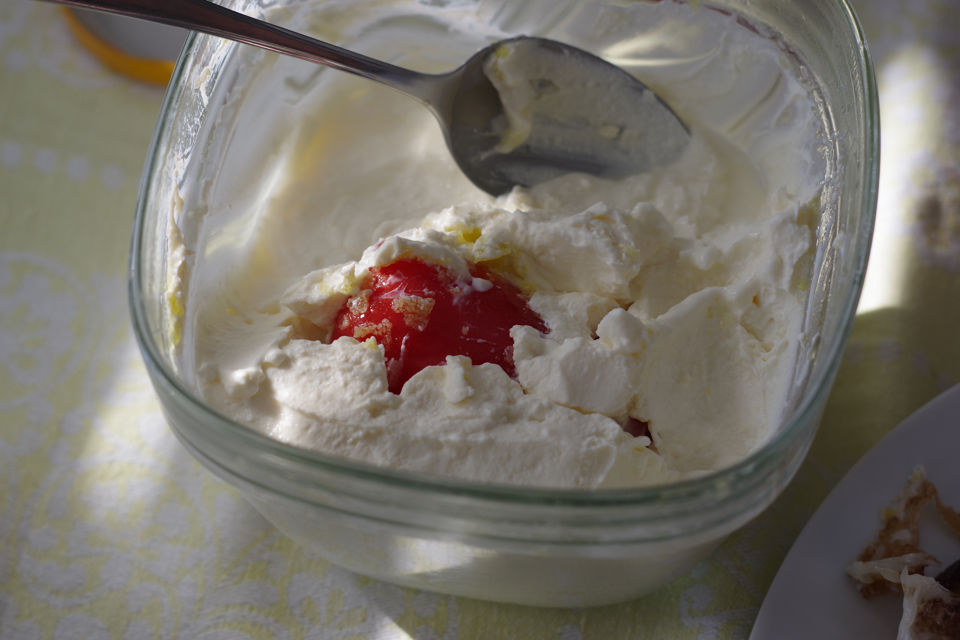
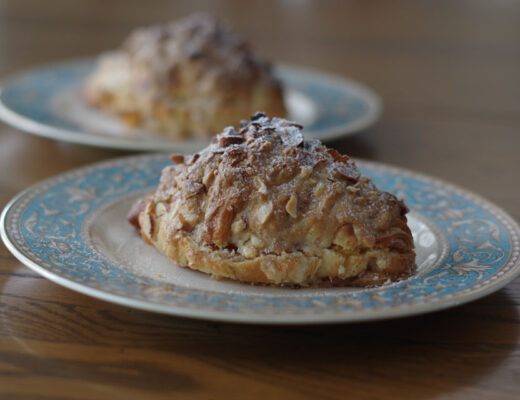
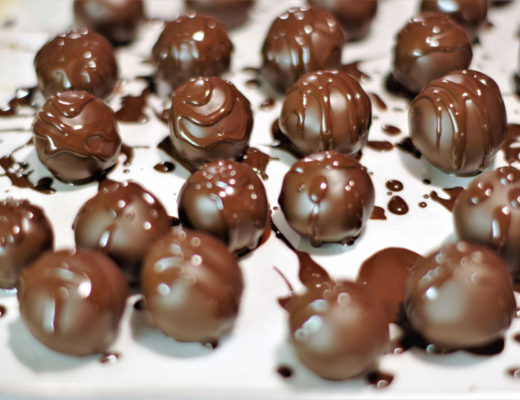
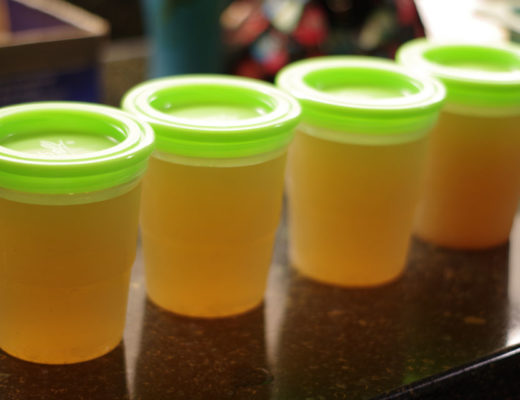
No Comments